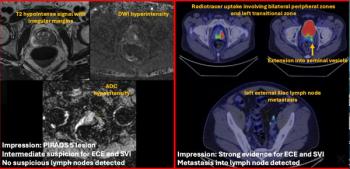
Trimming study sizes conserves archive storage space
Texas researchers have found ways of preserving PACS archive storage space and minimizing network image transfer times by tightening the size of their studies. "Removing unnecessary data from generated studies greatly eased storage demands on the
Texas researchers have found ways of preserving PACS archive storage space and minimizing network image transfer times by tightening the size of their studies.
"Removing unnecessary data from generated studies greatly eased storage demands on the archive server, lessening the likelihood of server crashes as the archive approached capacity," said Dr. Larry D. Edwards, a radiologist at the University of Texas Medical Branch (UTMB) at Galveston.
Smaller study sizes also serve to reduce network load, which leads to speedier transfer times. Faculty and residents are able to more easily check scans, as they are generated in a timely manner. This reduces recalls by allowing the radiologist to check scans and make decisions regarding additional images before the patient leaves the scanner.
Several methods were used at UTMB to trim study sizes:
- Bone and lung reformats performed at the CT scanner console were eliminated. Instead, PACS workstation sharpening filters were employed on the default images at the workstation site.
- Thin-slice CT acquisitions were reduced in favor of obtaining all CT studies at 7 to 10 mm with minimum pitch. When thinner slices were needed, console reformatting was performed and select images were transferred to the archive, Edwards said.
- Vascular studies for 3D reconstruction were sent to the 3D workstation, and limited 3D images were subsequently transferred to the archive.
- Chest CT protocol was changed to scan only through the adrenals, not through the entirety of the liver.
- MR pulse sequence protocols were streamlined to minimize data transferred and stored.
- Postgadolinium coronal images were eliminated from the brain-with-gadolinium protocol, and coronal/sagittal postgadolinium reconstructions were eliminated from the brain seizure protocol.
Prior to trimming study sizes, UTMB generated an average of 5.8 GB of CT and MR data per day. Edwards estimates MR angiography exam data size was reduced by approximately 60% and CT chest data by up to 50%.
"We judged the chest CT workstation-sharpened images to be better than the CT scanner-generated reformats," he said. "Radiologists generally preferred the workstation-filtered images to the console-generated reformats."
Newsletter
Stay at the forefront of radiology with the Diagnostic Imaging newsletter, delivering the latest news, clinical insights, and imaging advancements for today’s radiologists.




























